| Title | Steins;Gate 0 |
| Released | Dec 10, 2015 (JP) (PS3/PS4/Vita) May 8, 2018 (WW) (PC) |
| Developer(s): | MAGES. Inc. |
| Publisher(s): | Spike Chunsoft |
| Platform(s): | |
| Genre | Visual Novel, Adventure |
| Rating | M |
| Price | $34.99 |
| Proton | 8.0-5 |
Completed on PC with Committee of Zero Steam Patch
HowLongToBeat Time: 33 Hours (100%) | My Clear Time: 33 Hours 39 mins
Background
Steins;Gate 0 launched in December 2015 in Japan and 2018 internationally. Developed by 5pb. and Nitroplus, it serves as an interquel to the original Steins;Gate, exploring what happened in the worldline where Okabe failed to save Kurisu.
Its development followed the commercial underperformance of Chaos;Child, which had launched as an Xbox One exclusive in Japan and sold poorly despite being the most ambitious and expensive SciADV title up to that point. In the wake of that release, MAGES. pivoted back to the safer ground of Steins;Gate, reworking side material from the Epigraph Trilogy and other sources into what became Steins;Gate 0. The team initially had reservations about turning that content into a full game, but business pressures and timing played a key role in greenlighting the project.
While the game was rushed and portions — like an entire Fubuki route — were cut or repurposed, it released to immediate commercial success, selling over 100,000 copies on day one. Despite being rooted in existing materials, Steins;Gate 0 delivered a story that resonated deeply with fans and was later expanded through drama CDs, manga, and an anime that effectively served as a final iteration of the game’s worldline narrative.
The development team for Steins;Gate 0 includes:
- Hayashi Naotaka (Writer): Steins;Gate, Chaos;Head
- Nishimura Takuya (Director): Steins;Gate, Robotics;Notes
- huke (Character Designer / Artist): Black Rock Shooter, Steins;Gate
- Takeshi Abo (Composer): Science Adventure series, Famicom Detective Club
- Chiyomaru Shikura (Producer): Overseer of the Science Adventure series, known for its narrative vision
Experience
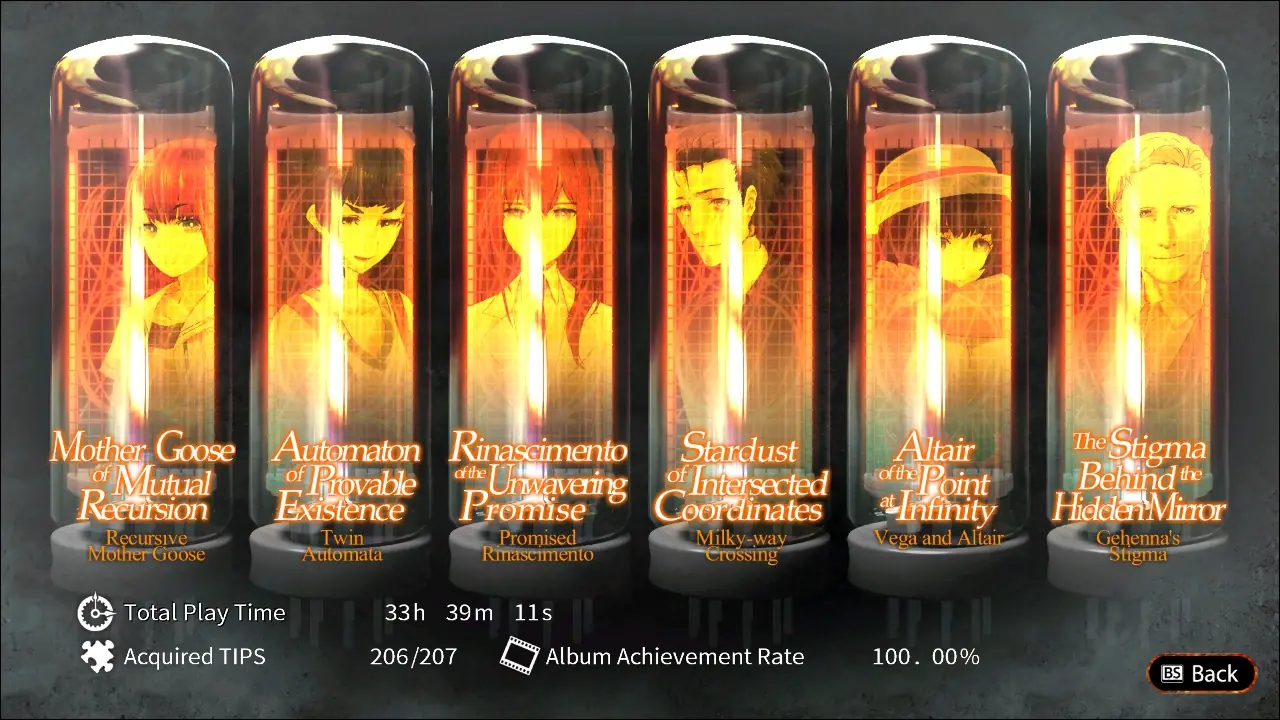
The true ending shines through the fragments.
As a Science Adventure fan since Steins;Gate’s 2013 anime, I followed Steins;Gate 0’s anime but only recently tackled the visual novel. Using Committee of Zero patches for enhanced translations, I played Chaos;Head Noah, Steins;Gate, Robotics;Notes Elite, and Chaos;Child first.
While Chaos;Head Noah struck me as the series’ most intense, Steins;Gate 0’s emotional depth hit hardest in its raw, lingering sorrow, reshaping my view of SciADV.
Impressions
Introduction
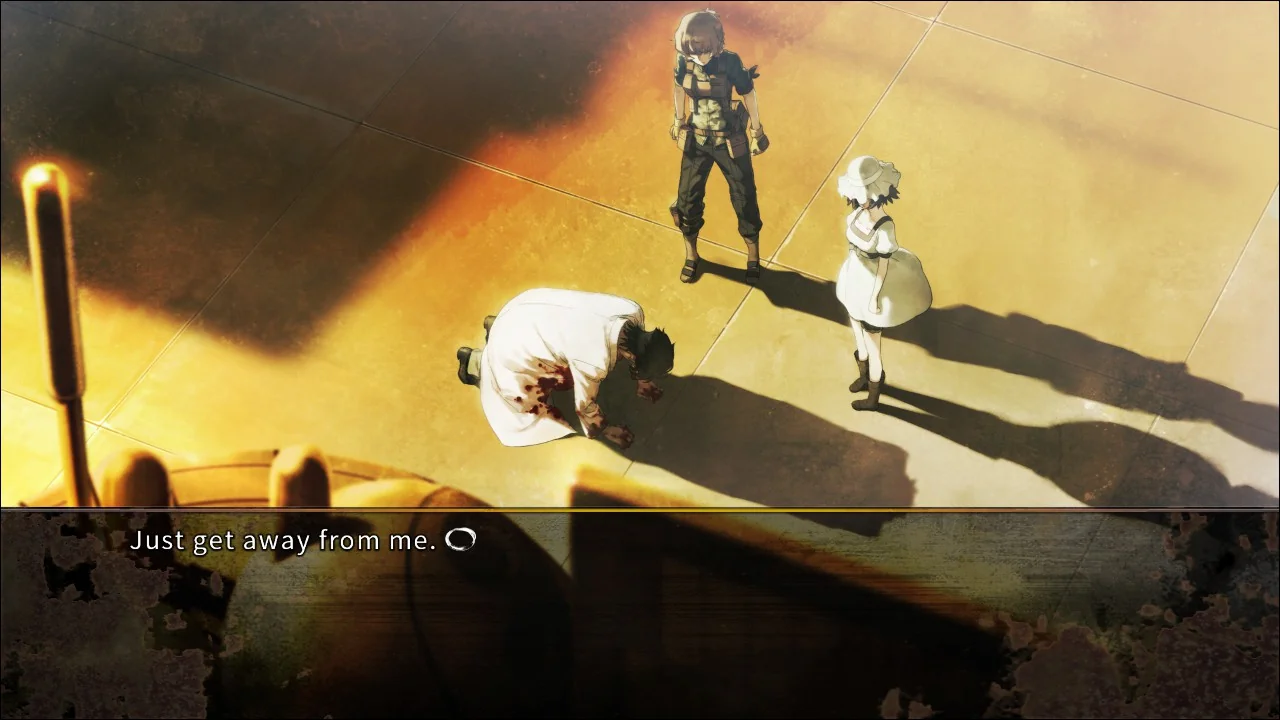
Even heroes have the right to fall apart.
Steins;Gate 0 weaves the most emotional tale in the Science Adventure series, set in a reality where Rintarou Okabe wrestles with loss. Unlike the original’s frantic tension, this interquel embraces melancholy, blending AI ethics, neuroscience, and raw feeling. Its muted art and haunting score resonate with SciADV fans, visual novel enthusiasts, and newcomers drawn to stories of fate and regret. Accessible as a standalone, it shines brightest for those who know Okabe’s world.
Gameplay & Mechanics
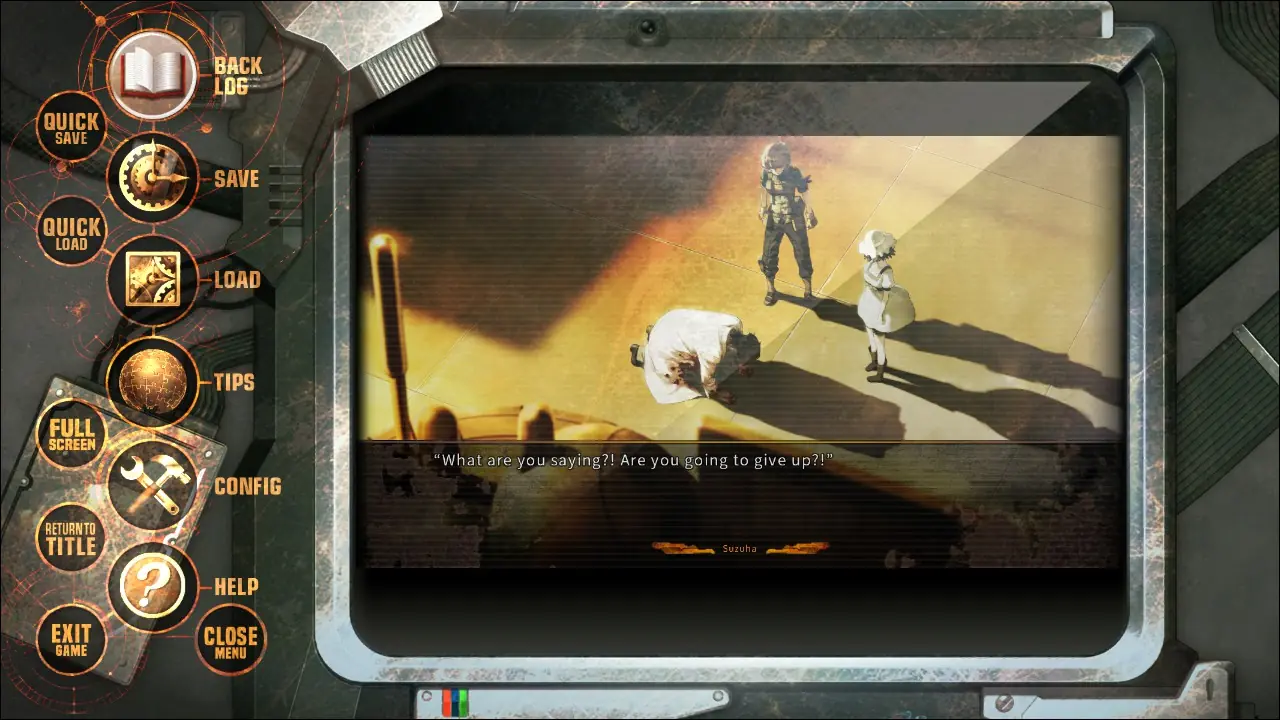
Your next choice is always in frame.
Steins;Gate 0 refines the visual novel formula with intuitive mechanics that deepen immersion. Building on Chaos;Child’s interface, pausing a scene overlays options on the frozen frame, preserving flow and context.
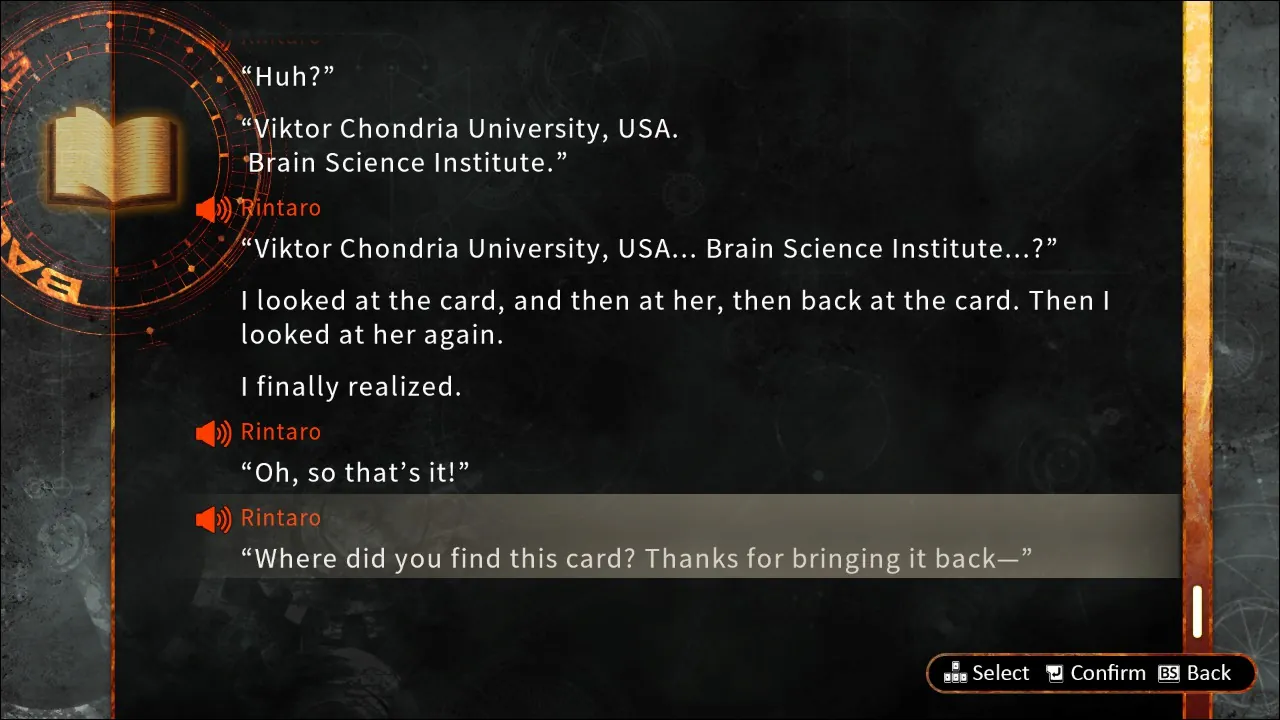
Backlog keeps the story flowing smooth.
Backlog
The backlog lets you rewind dialogue with voice playback, perfect for catching dense exposition or savoring performances in this 30–35-hour story.
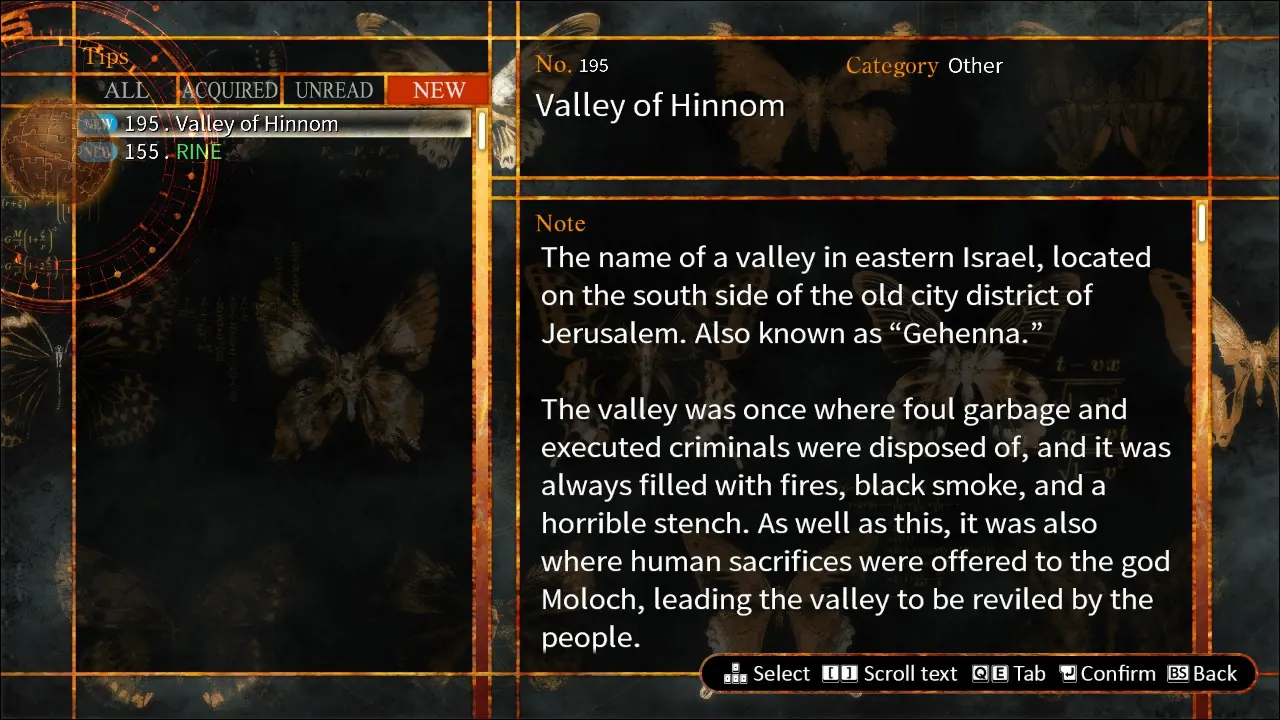
Tips List breaks down the complex stuff.
Tips List
An in-game glossary explains jargon like “worldlines” and concepts like quantum mechanics, grounding the story for newcomers without breaking immersion.
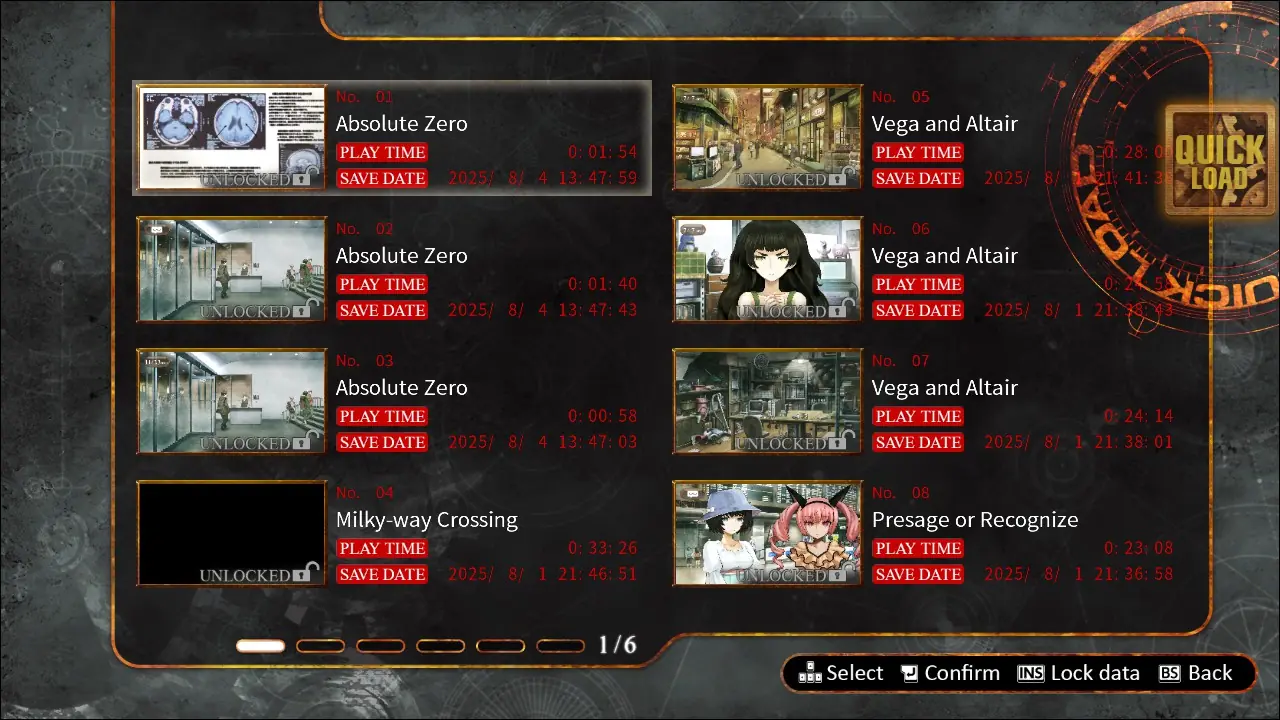
Quick load keeps your worldline steady.
Quick Saving & Loading
Responsive quick save/load options let you experiment with choices, streamlining exploration of six routes and the True Ending, making replays effortless.
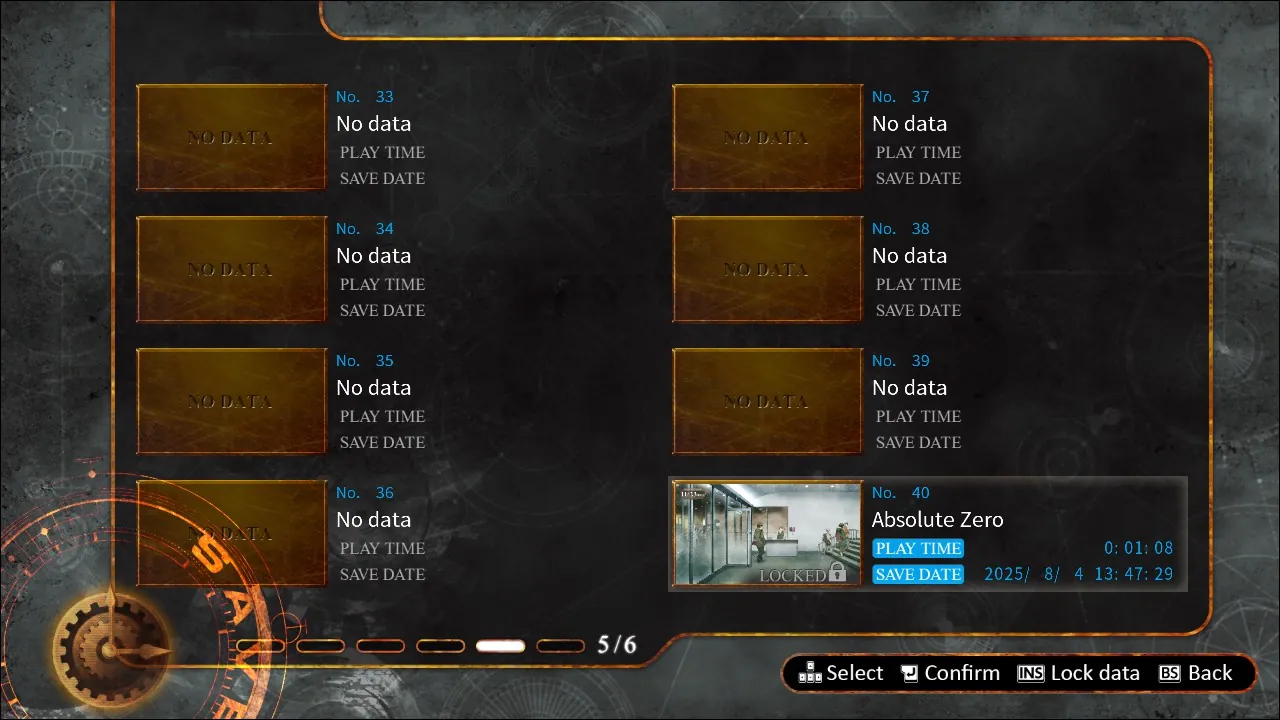
No accidental overwrites on this worldline.
Locking & Unlock Feature
Save files can be locked to protect decision points, a vital tool for organizing replays across branching paths, enhancing replayability.
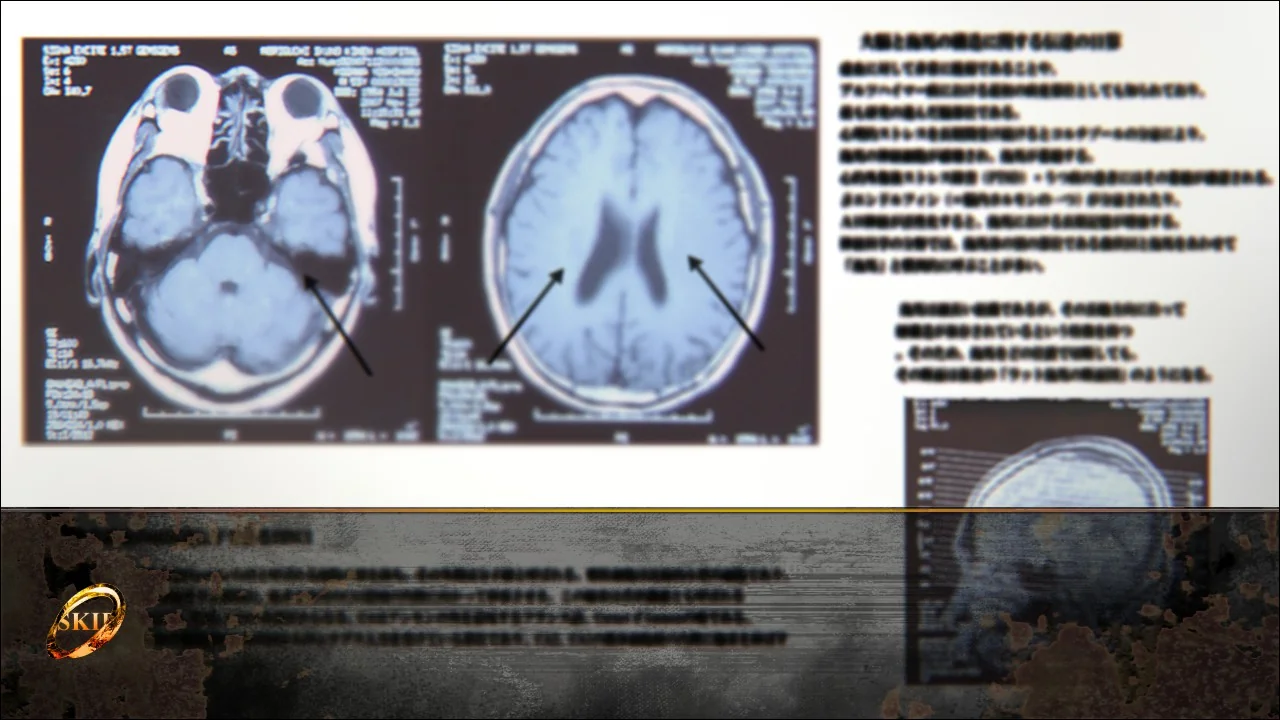
Every second counts on this timeline.
Auto Read & Skip
Auto mode advances text naturally, ideal for soaking in voice acting. Skip and auto-skip features make revisiting routes efficient, easing multiple playthroughs.
Art & Audio
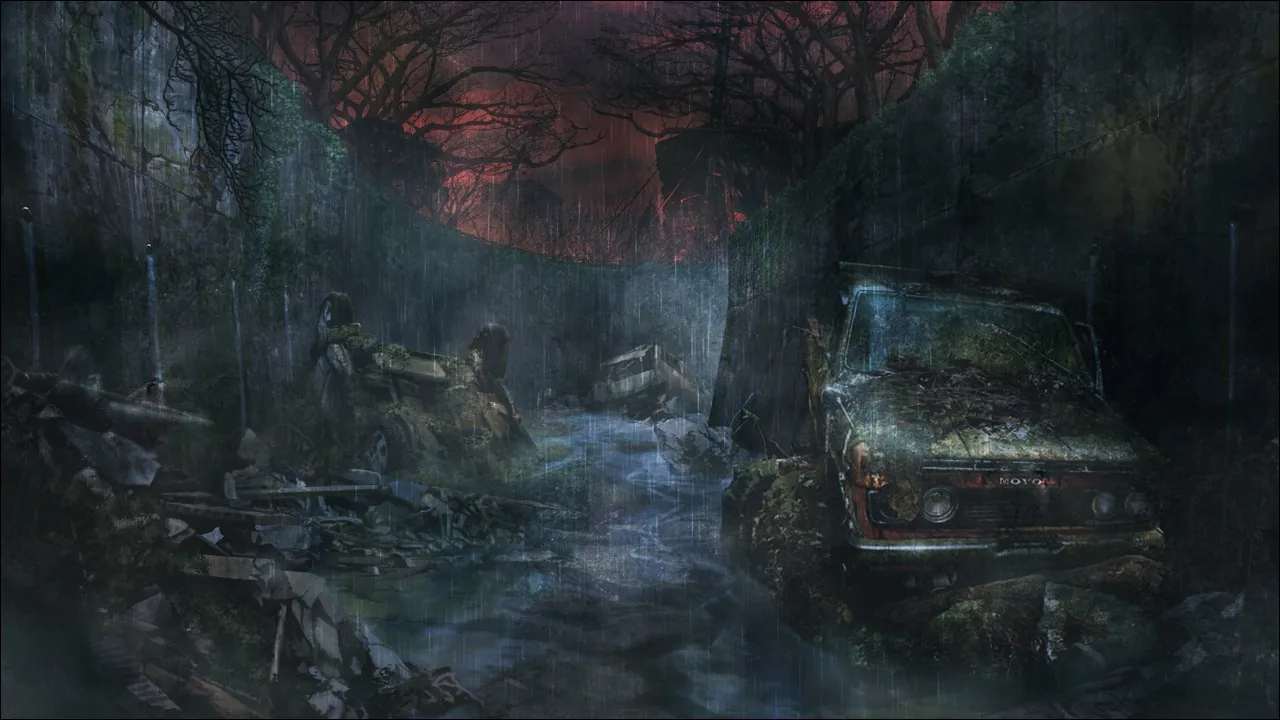
The battlefield bleeds through huke’s eyes.
huke’s art swaps Steins;Gate’s cosmic vibrancy for muted tones—pale blues, cold whites, somber shadows. Characters feel worn, their expressive designs carrying grief. Settings like Okabe’s cluttered lab or Tokyo’s gray streets evoke a worldline drained of hope.
Takeshi Abo’s soundtrack trades bombast for reflective melancholy, with delicate melodies that feel like fading memories. Ambient sounds—keyboard taps, distant hums—heighten the fragile tension. I paused often, struck by a note’s emotional weight.
Some standout tracks:
Messenger
A haunting, ambient piece drifting through emotional lulls. Its soft synths and slow pulse feel like a memory fading, suiting quiet reflection. It lingers, heavy with unspoken loss.
Amadeus
The main theme weaves tension and fragility, its piano and electronic hums evoking a mind torn between hope and despair. It makes every choice feel like a step into the unknown.
Last Game
The True Ending’s theme is a melancholic triumph, blending soft vocals and gentle strings into a cathartic farewell. It closes with quiet hope, leaving you reflective long after the credits.
Unique Features & Mechanics
Steins;Gate 0 introduces features that deepen its narrative immersion, setting it apart in the visual novel genre.

Perspective shifts unlock hidden truths.
Perspective Switch
Shifting to supporting characters adds narrative depth, offering glimpses into their struggles without spoilers. It weaves an interconnected worldline, amplifying the story’s emotional resonance.
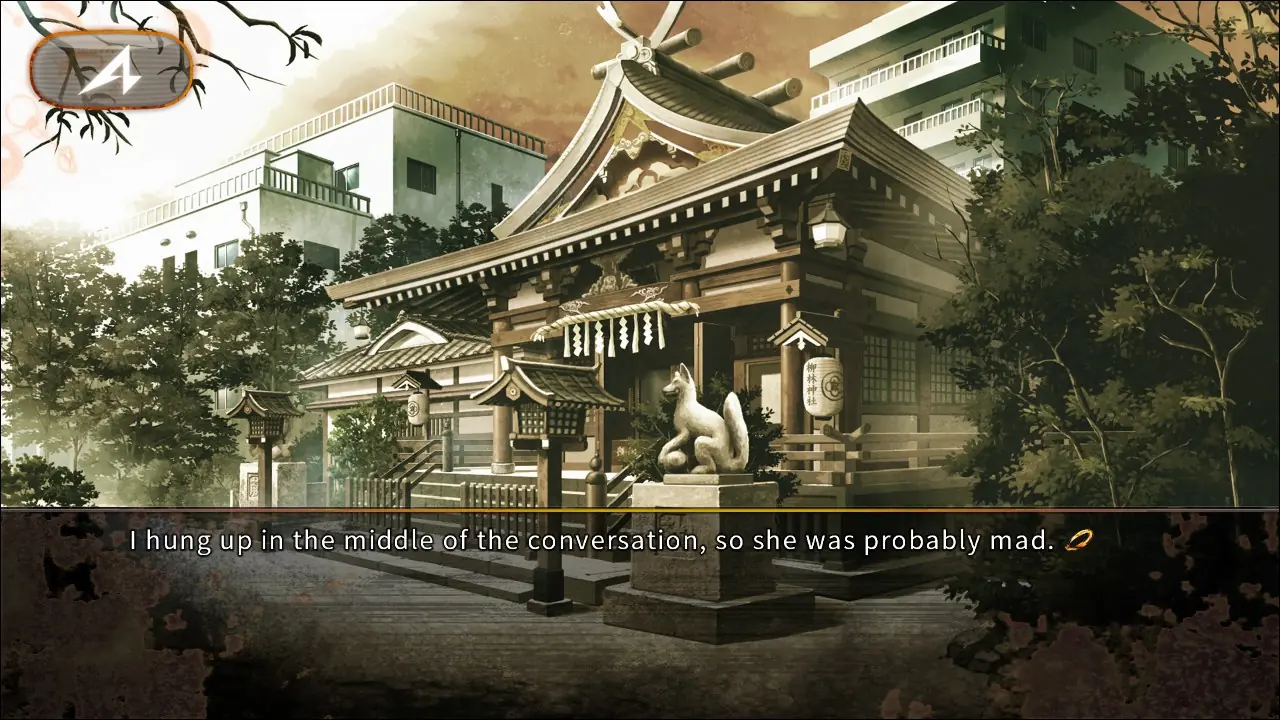
Every ring shapes the fate of the worldline.
Phone Calls
Timed phone calls drive route divergence—answer or ignore to shape paths. Simpler than Steins;Gate’s D-Mails, they’re intuitive, making choices feel like personal leaps of faith.
Seiyuu Performances
No English dub is needed—the Japanese cast is exceptional. Mamoru Miyano’s Okabe, raw with despair, echoes his intense Light in Death Note. Kana Hanazawa’s Mayuri shines with quiet strength, her subtle shifts rivaling her Akane in Psycho-Pass. Megumi Han’s Kagari, layered with vulnerability, recalls her Gon in Hunter x Hunter.
The chemistry between Mayuri and Kagari carries scenes that hit like a gut punch, elevating the game’s emotional core.
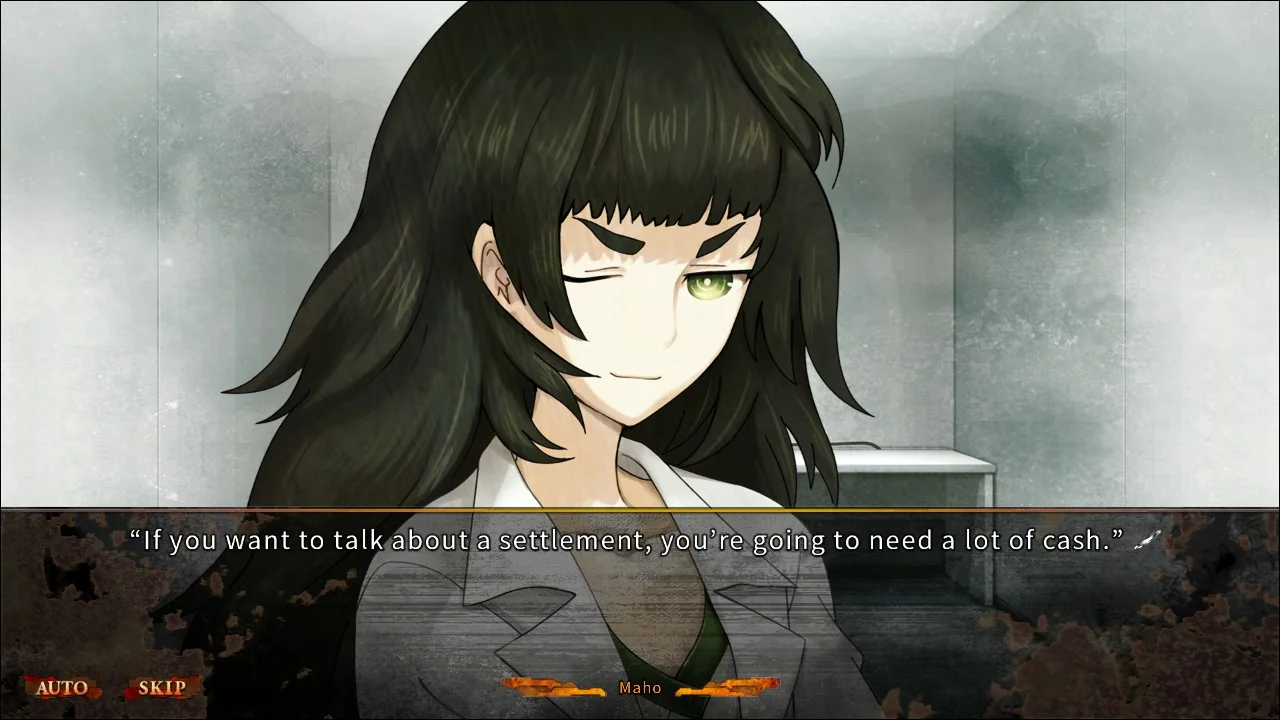
Cash talks, but so does a knowing wink.
- Mamoru Miyano (Okabe): Light (Death Note), Chrollo (Hunter x Hunter)
- Asami Imai (Kurisu): Tsubaki (BlazBlue), Chihaya (The Idolmaster)
- Y? Kobayashi (Luka): Lucina (Fire Emblem), Katsuragi (Senran Kagura)
- Megumi Han (Kagari): Gon (Hunter x Hunter), Kana (Oshi No Ko)
- Kana Hanazawa (Mayuri): Akane (Psycho-Pass), Ichika (Quintuplets)
- Sayuri Yahagi (Maho): Murasaki (Senran Kagura), Amelie (Strike Witches)
Story & Writing
Steins;Gate 0 tells a self-contained, emotionally rich story while tying deeper into the overarching themes of Science Adventure. It builds on Steins;Gate’s tragedy by focusing less on time travel and more on memory, loss, and ethical dilemmas in AI and neuroscience.
The first half is tightly written and emotionally gripping. The second half does slow at times, weighed down by dense exposition — but it mirrors Okabe’s psychological state and ambition. It’s a tradeoff that works more than it hinders.
Themes of identity, recursion, grief, and choice are all explored with a maturity that surpasses the original. Maho’s arc — and what she represents in contrast to Kurisu — grounds the game emotionally and ties its scientific musings to something deeply human.
Verdict
Steins;Gate 0 is a fearless, introspective triumph that surpasses its predecessor. It transforms the Science Adventure series’ themes of fate and choice into a haunting meditation on grief and hope, blending polished mechanics with a narrative that aches. For visual novel fans, Steins;Gate devotees, and newcomers seeking emotional depth, it’s a journey that demands patience but delivers unforgettable resonance.
The first half is a masterclass in pacing and tone, its choices and performances so gripping I paused to process their weight. The second half slows slightly, with dense exposition occasionally testing focus, but this quirk underscores the game’s ambitious scope.
As someone who found Chaos;Head Noah the series’ most intense, I was unprepared for Steins;Gate 0’s quiet, piercing sorrow, which left me reflecting on loss long after each route.
Few stories dare to make loss feel so tangible, yet so hopeful, speaking to anyone who’s ever grappled with regret. Steins;Gate 0 isn’t just a game—it’s a worldline you’ll carry long after the screen fades.
TLDR
Steins;Gate 0 (PC)
9
Excellent
Summary: A poignant, introspective companion to Steins;Gate that deepens the Science Adventure universe with gripping choices and haunting themes.
Its masterful first half captivates, though minor second-half density and cut content slightly temper its brilliance.
References
- Kirikiri Basara, “Why Steins;Gate 0 Exists: Examining Its Development History” Kirikiri Basara, July 27, 2025.
- Steins;Gate 0 Announcement
- Messenger – Takeshi Abo
- Amadeus – Takeshi Abo
- Last Game – Zwei


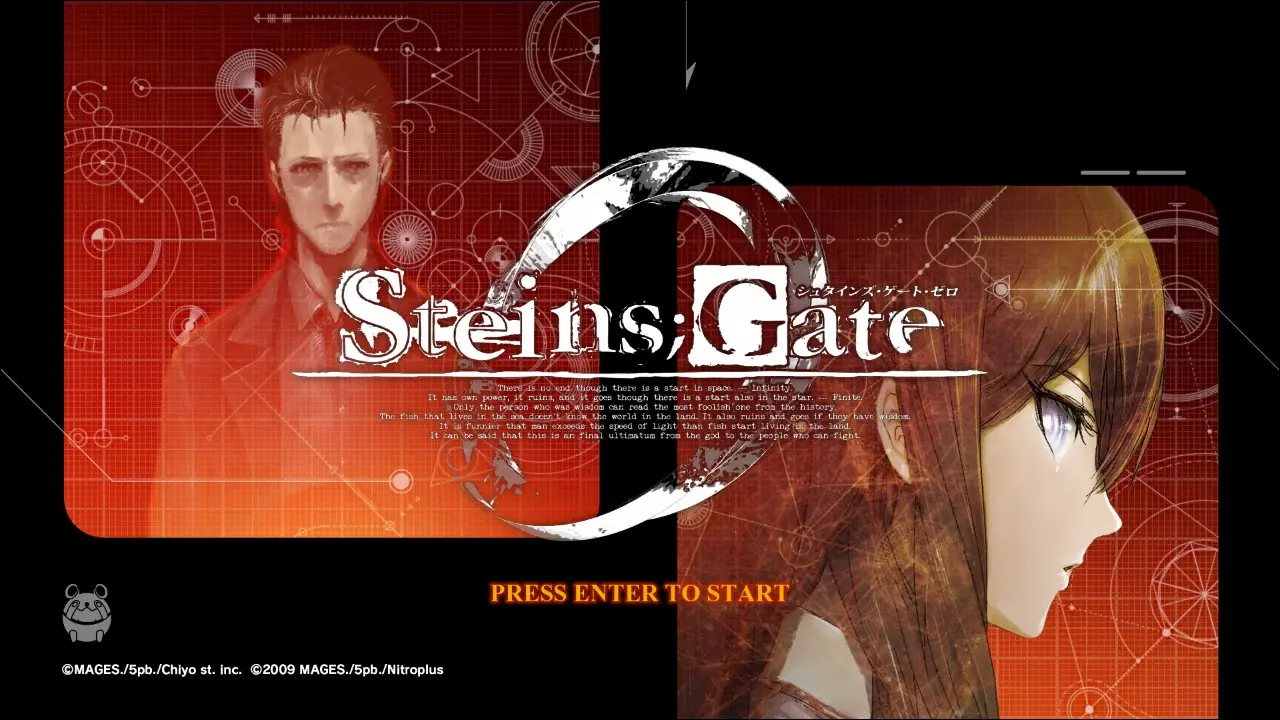
Leave a Reply